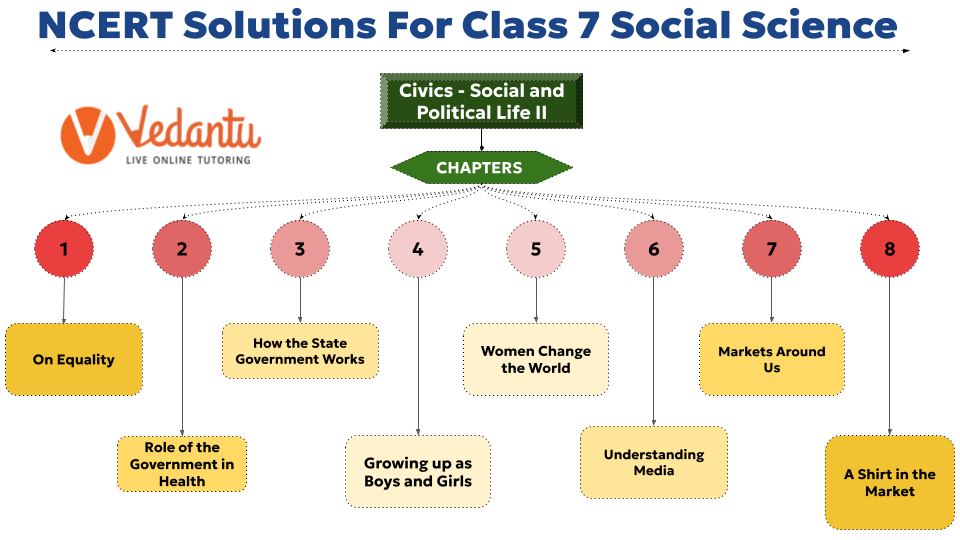Chapter-wise Class 7 Social Science Social And Political Life Questions and Answers Free PDF Download
FAQs on NCERT Solutions For Class 7 Social Science Social And Political Life All Chapters - 2025-26
1. What chapters are covered in the NCERT Solutions for Class 7 Social and Political Life for the 2025-26 session?
These solutions cover the entire syllabus prescribed by CBSE for the 2025-26 session. You will find chapter-wise solutions for all topics in the 'Social and Political Life' textbook, including key chapters like 'On Equality', 'Role of the Government in Health', 'How the State Government Works', 'Women Change the World', and 'Markets Around Us', ensuring complete syllabus coverage.
2. How are the answers in the NCERT Solutions for Class 7 Social and Political Life structured?
Each answer is structured to align with the CBSE marking scheme. The solutions provide a clear, step-by-step explanation for every question in the NCERT textbook. This approach helps you understand the correct methodology for framing an answer, not just the final solution, which is crucial for exams.
3. Can I use these NCERT Solutions to complete my Class 7 Civics homework?
Yes, absolutely. These solutions are an excellent resource for homework assistance. They provide accurate and well-explained answers to every textbook question. By referring to them, you can understand the underlying concepts, verify your own work, and complete your assignments with a deeper understanding of the subject matter.
4. Why is a step-by-step format important for answering questions in Class 7 Civics?
A step-by-step format is crucial because it teaches the process of answer construction, a key skill for Social Science. It breaks down complex questions into simpler parts, showing how to introduce a topic, present key arguments with examples from the textbook, and conclude effectively. This method helps you replicate the correct answering style in your exams.
5. How can I use the NCERT Solutions for Class 7 Social and Political Life to improve my answer-writing skills?
To improve your answer-writing, first attempt to solve the textbook questions independently. Afterwards, compare your answer with the provided solution. Pay close attention to:
The use of key terms and definitions from the chapter.
How examples are used to support main points.
The logical structure of the answer (introduction, body, conclusion).
This practice helps you write comprehensive and high-scoring answers as per the CBSE guidelines for 2025-26.
6. How are these NCERT Solutions different from a standard guide book?
While many guide books provide summarised or direct answers, these NCERT Solutions focus on conceptual clarity and correct methodology. They are created by subject experts to explain the 'why' behind each answer, linking it directly to the NCERT textbook's core concepts. The goal is to equip you with the understanding to tackle any similar question, not just to provide a ready-made answer.
7. Are these solutions suitable for independent study and self-assessment?
Yes, they are designed for self-study. The clear and comprehensive explanations allow students to learn at their own pace. You can use them for self-assessment by solving a chapter's questions first and then using the solutions to check your accuracy, identify weak areas, and reinforce your understanding of key civic concepts.
8. Beyond direct answers, how can these solutions aid in revising the entire 'Social and Political Life' syllabus?
For effective revision, use the solutions as a strategic tool. After reading a chapter, go through the questions and their solutions to quickly recap the main themes. This process helps connect different concepts, such as the relationship between equality, government roles, and media influence. It solidifies your knowledge and ensures you are fully prepared for exams by understanding the syllabus holistically.



















